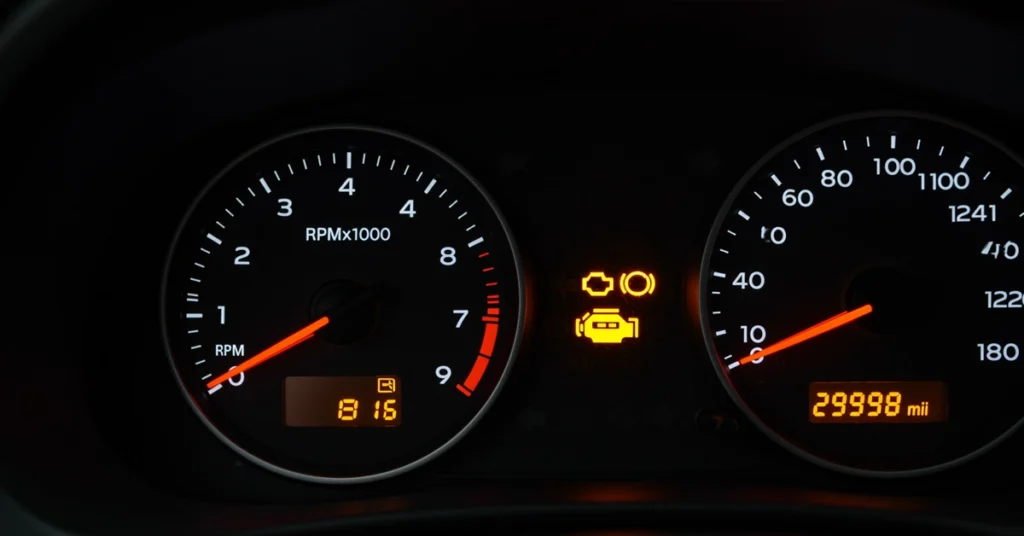Modern Audis and Volkswagens feature advanced electronics that continually monitor engine performance. Whenever a yellow or red warning light appears whether it’s the Check Engine Light (CEL) or EPC the vehicle is signalling that something needs attention. These lights correspond to Diagnostic Trouble Codes (DTCs) stored in the vehicle’s ECU. So, what do those codes mean, and how urgent is the issue?
In this guide, we’ll explain common fault codes for Audi and VW models, break down what each warning light implies, and outline practical steps you can take to address the problem.
What Are Engine Warning Lights and Why They Matter
Audi and VW vehicles use onboard diagnostics (OBD) to monitor engine, emissions, ignition, and fuel systems. Warning lights like the CEL, EPC, or glow plug indicator are activated when the system detects a malfunction. Each light corresponds to a specific fault code (e.g., P0420), helping technicians quickly understand what’s wrong. Source: How OBD-II Works.
How to Read Audi & VW Fault Codes
To retrieve fault codes, you’ll need a diagnostic scanner compatible with OBD-II. Tools include:
- Dealership-level scanners
- VCDS (VAG‑COM) for VW/Audi
- OBD-II readers like OBDeleven or Carista apps
Once connected, codes like P0299, P0420, or P0171 identify specific issues. Interpreting them correctly helps avoid costly guesswork.
P0299 – Turbocharger Underboost
This code often appears in turbocharged VW (Golf GTI, Passat TDI) or Audi (A3, A4) models. It indicates the turbo isn’t producing the expected boost pressure. Common causes include vacuum leaks, faulty wastegate systems, or defective turbo actuators. Symptoms include reduced power and limp mode activation. Fixing it promptly is important to avoid engine stress.
P0420 – Catalyst System Efficiency Below Threshold
This code relates to emissions performance and often links to a failing catalytic converter or an oxygen sensor issue. It rarely affects drivability but can cause your vehicle to fail emissions testing. Diagnosis typically includes checking the converter and sensors.
P0171 – System Too Lean (Bank 1)
A lean condition means the engine is drawing in more air than fuel often caused by vacuum leaks or a dirty mass airflow (MAF) sensor. Drivers may notice hesitation, reduced power, or rough idle. Cleaning the intake system and inspecting hoses usually resolves the issue.
P2187 – System Too Lean at Idle
Similar to P0171, but specific to idle conditions. Often caused by a malfunctioning PCV valve or intake manifold leak. Symptoms include engine stalling at idle or reduced fuel efficiency. Targeted repair of vacuum-related components typically helps.
P0441 – EVAP Purge Flow Incorrect
This fault points to an issue with the fuel vapor purge system, such as a faulty purge valve or even a loose gas cap. While it won’t impact performance, it may cause a fuel odor or failed emissions check.
P2002 – Diesel Particulate Filter Efficiency Below Threshold
Common in diesel VW and Audi models, this indicates clogging in the DPF. Symptoms include poor fuel economy and reduced power. Professional regeneration or cleaning is usually required to resolve this.
P0401 – Exhaust Gas Recirculation Flow Insufficient
This code means the EGR valve isn’t performing properly, often due to carbon buildup. Symptoms may include rough idle or increased emissions. Cleaning or replacing the valve can resolve the issue.
EPC Light – Electronic Power Control Fault
Unique to Volkswagen Group vehicles, the EPC light indicates faults in throttle control or engine electronics often disabling cruise control and lowering power output until resolved. Diagnosis requires a scan tool and component inspection.
Flashing vs Solid Engine Warning Light: Levels of Urgency
A solid amber light usually indicates a non-emergency issue that should be inspected soon. A flashing CEL, however, often signals an active misfire which can cause serious engine damage if you continue driving. When in doubt, stop driving and get a diagnostic scan immediately.
What You Should Do When a Warning Light Appears
- Identify the specific dashboard light.
- Observe symptoms any limp mode, rough idle, or smoke?
- Scan for codes using an OBD-II tool or visit a trusted workshop.
- Avoid random part swaps diagnosis-based repair is far more effective.
- Address the issue promptly to prevent costly damage.
Preventing Fault Codes Before They Appear
Many engine faults can be avoided with timely maintenance:
- Stick to your service schedule and use manufacturer-recommended oils.
- Use good-quality fuel to reduce carbon buildup.
- Let diesel vehicles complete longer runs for DPF regeneration.
- Address small symptoms early like hesitation or minor electrical glitches.
- Consider periodic proactive scans even when your car seems fine.
Why should I fix my Audi when the check engine light comes on?
Your Audi’s engine is its heart, and the check engine light is its way of telling you something’s not right. While it might not always feel urgent especially if the car seems to run fine the reality is that ignoring this warning can lead to much bigger (and more expensive) problems down the line. It could be something as small as a loose gas cap or as serious as a misfiring cylinder.
Even if your Audi Q5, A6, or Q7 isn’t showing any other symptoms, driving around with that light glowing on your dash isn’t worth the risk. The onboard computer that controls your car’s diagnostics is designed to trigger the check engine light only when something needs attention
Is it safe to drive my Audi with the check engine light on?
If the check engine light is steady (not flashing), it usually means there’s an issue that needs attention soon, but not immediately. That said, you shouldn’t ignore it for too long. Continuing to drive your Audi with the light on could worsen whatever issue is present and lead to more expensive repairs later.
Unfortunately, you can’t know how serious the problem is without reading the trouble code using a diagnostic tool. That’s why it’s best to bring your car to a certified Audi technician as soon as possible
Pro Tip from MotorHub
Driving an Audi in hot climates like the UAE? Heat can accelerate wear on sensors and spark plugs two common culprits behind check engine lights. Regular servicing helps prevent these issues before they start.
Final Thoughts
Engine warning lights and fault codes are essential diagnostic tools, not annoyances. Understanding what they mean and what action each requires can save you time, money, and stress. Whether it’s a minor sensor issue or something more serious like turbo or DPF malfunction, knowing the right next step ensures your Audi or VW keeps running reliably.
MotorHub connects car owners in the UAE with trusted mechanics and certified workshops for diagnostic and repair services especially for Audi, VW, and other European models. Whether you’re dealing with a check engine light, EPC warning, or any other performance issue, our network delivers vetted experts right to your doorstep.



